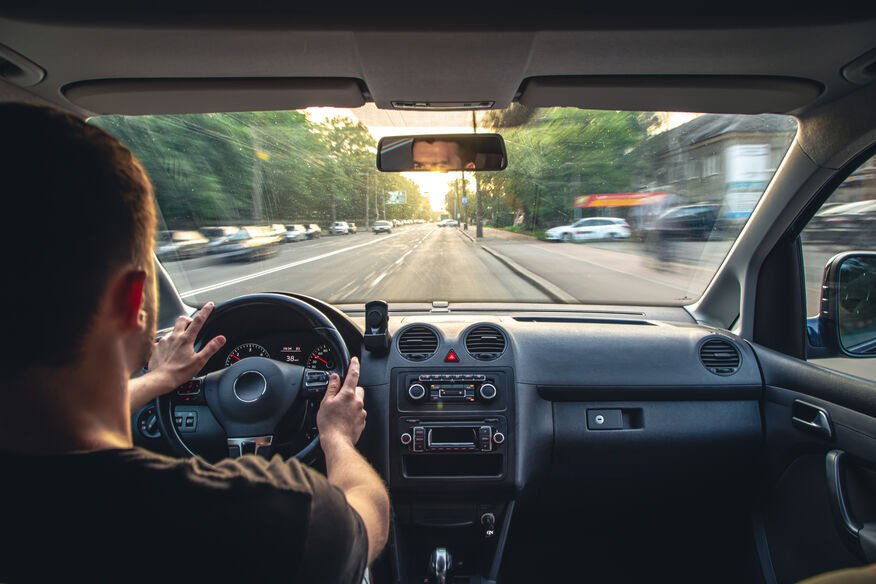Buying used vehicles at a low price, fixed up, and sell them for profit is a great way to make money. But without a solid plan, it’s easy to lose more than you earn. That’s where a car flipping checklist comes in.
Why is a checklist so important? Because flipping cars isn’t just about finding a cheap ride and putting it back on the market. You need to know what to look for, how to avoid hidden problems, and how to boost a car’s value with smart, affordable repairs.
In this used car flipping guide, we’ll walk you through each step of the process, from buying the right vehicle to getting it ready for sale.
What to Know Before You Flip a Car
Before you even start browsing for your first flip, there are a few important things to understand.
First, let’s talk about the legal stuff. Did you know that in many states, you can only sell a certain number of cars per year without a dealer license? It’s smart to check your local laws about taxes, titles, and flipping limits. It saves you some serious trouble later on.
Next up, what kind of cars should you be flipping? Look for used vehicles that are known for reliability, have low mileage, and need only minor repairs. Brands like Toyota, Honda, and Ford are often safe bets.
Also, don’t forget about tools, time, and money. Do you have basic tools for small repairs? How much time can you commit? And most importantly, what’s your budget? Remember, it’s not just about the car, you’ll need to account for parts, repairs, detailing, and marketing. Planning ahead can mean the difference between a profit and a loss.
Car Flipping Checklist for Used Vehicles
Step 1: Research and Find the Right Car
Before you spend a dollar, do your homework. Where should you look? Start with online marketplaces like Facebook Marketplace, Craigslist, or auction sites. Local sellers also offer great deals.
Look for vehicles that are priced below market value but still in good condition. These are the gems that give you room to profit. Think about what buyers want, cars that are reliable, fuel-efficient, and easy to maintain. Models like the Toyota Corolla, Honda Civic, or Ford Focus often hold their value well.
Step 2: Inspect the Exterior
Once you’ve found a potential flip, give the exterior a close look. Does the paint match on all panels? Are there dents, scratches, or rust spots? These can be costly to fix and may lower the resale value.
Check for frame damage too. Do the doors close evenly? Are the body gaps straight and consistent? Even a slight misalignment could point to a past accident.
Also, inspect the tires, mirrors, headlights, taillights, and windows. Small issues like a cracked mirror or a worn tire may seem minor but add up quickly.
Step 3: Check the Interior Condition
Now, hop inside and take a good look around. Are the seats ripped or stained? Do you smell anything odd, like cigarette smoke or mold? Strong odors are tough to remove and might turn off buyers.
Test every button and switch. Do the power windows work? Does the AC blow cold air? Make sure the dashboard lights up correctly, and the radio or infotainment system works as it should.
Look at the floorboards and under the seats. Water damage or soft spots is a red flag for flooding, something you definitely want to avoid.
Step 4: Mechanical and Engine Inspection
Here’s where things get serious. Start the engine when it’s cold. Do you hear any strange sounds like knocking or ticking? That could mean big problems.
Check the exhaust smoke. Blue smoke may mean it’s burning oil, and white smoke might signal coolant issues.
Next, open the hood. Check the oil level and color. Dirty or low oil mean the car hasn’t been well-maintained. Look at the coolant, brake fluid, and transmission fluid too.
Don’t forget the belts, hoses, and battery. See any cracks, leaks, or corrosion? Use an OBD2 scanner to read any engine error codes, it only takes a few seconds and could save you from a bad buy.
Step 5: Test Suspension, Steering, and Brakes
Give the car a little bounce test, press down firmly on each corner and see how it reacts. If it keeps bouncing, the shocks might be worn out.
During the test drive, listen carefully. Do you hear clunking or squeaking? Does the steering feel loose or stiff? Good handling is key for resale.
Test the brakes, too. They should feel firm, not spongy. No squealing, grinding, or shaking. Also, try the parking brake to make sure it works correctly.
Step 6: Verify Vehicle History and Title
This step is non-negotiable. Run the vehicle’s VIN through trusted sites like CarFax, AutoCheck, or NMVTIS. What’s the car’s story? Has it been in a major accident? Was it ever declared a total loss?
Make sure the title is clean and clear, no liens, no salvage history, and no funny business with the odometer. If anything seems off, walk away.
Step 7: Evaluate Pricing and Repair Costs
Now it’s time to crunch some numbers. Add up everything: the purchase price, repair costs, cleaning, and any parts you’ll need.
Then check how many similar cars are selling for in your area. Can you still make a profit? If not, it’s probably not the right car to flip.
Stick with cars that need small fixes, things you or a mechanic can handle without blowing your budget.
Step 8: Plan Repairs and Improvements
Start with what matters most—safety. Fix brakes, lights, tires, and anything that could affect the car’s performance.
Next, focus on quick wins. Replace worn floor mats, polish the headlights, fix small dents, or touch up paint. These simple updates can seriously boost the car’s curb appeal.
Avoid cars with major engine trouble or transmission issues unless you’re highly skilled or working with a trusted mechanic.
Step 9: Final Cleaning and Detailing
This is where you make the car shine. Vacuum every corner, wipe down surfaces, and remove any odors. Use a fabric cleaner for the seats and plastic restorer for faded trims.
Wash the exterior, polish the paint, and add a good coat of wax. Want bonus points? Clean the engine bay too. A clean car sells faster and usually for more money.
Step 10: Prepare the Car for Sale
Take clear, high-quality pictures in natural light from multiple angles. Highlight the clean interior and any improvements you’ve made.
Write a clear, honest description. Mention the vehicle’s condition, features, repairs done, and why it’s a great buy.
Set your price based on your research, but leave a little wiggle room for negotiation. Buyers love a good deal, and you’ll still come out ahead.
Common Mistakes to Avoid
Even the best car flippers slip up sometimes. But the good news? You can avoid those mistakes if you know what to look for.
First, don’t overpay for the car. That “great deal” you found might not be so great once you add in all the repairs. Always research the car’s true market value before making an offer.
Skipping the vehicle history report is another big mistake. Think a clean-looking car means it’s problem-free? Not always. A report can reveal past accidents, flood damage, or odometer fraud.
Also, don’t ignore repair costs. Even small fixes can add up fast. A few broken lights, worn tires, or a bad battery might seem minor, but they still cost money and time.
And here’s one more: don’t assume the resale value will be sky-high. Just because someone listed a similar car for $6,000 doesn’t mean it will sell for that. Always check what similar cars are actually sold for in your area.
Tips to Maximize Profit When Flipping Cars
Want to flip cars and actually make money? These simple tips can help boost your profits and cut down on stress.
Start by building a network. Know a reliable mechanic? A good detailer? These people can save you time and give you better prices than doing it all on your own.
Keep records of everything. Write down every repair, upgrade, and cost, no matter how small. That way, you’ll know your true profit and can show buyers proof of work done.
Track your flips. Use a simple spreadsheet or app to monitor each project. What did you spend? How much did you earn? What would you do differently next time?
And if you’re just starting out, begin with low-cost flips. Why? Because there’s less risk. Even if something goes wrong, the loss won’t be huge and you’ll gain valuable experience.
FAQs
Is flipping cars legal without a dealer license?
That depends on your location. Most places allow you to sell a few cars a year without a license but if you plan to flip regularly, check your state’s laws first. It’s better to be safe than sorry.
How much profit can I make per flip?
Profits vary, but most beginners aim for $500–$2,000 per car. Your results depend on your skills, repair costs, and how smart you are with buying and selling.
How many cars can I flip in a year?
Again, it depends on where you live. Some states limit you to 3–5 sales per year without a dealer license. Check with your local DMV to be sure.
What are the best cars to flip?
Reliable, affordable vehicles are your best bet. Think Toyota Corolla, Honda Civic, Ford Focus, cars that are easy to fix, have strong resale value, and are always in demand.
Conclusion
Car flipping is a smart way to make extra cash but only if you do it right. That’s why following a step-by-step checklist is so important.
It helps you stay organized, avoid bad buys, and focus on smart decisions that bring in profit.
So what’s next? Save or print this checklist and use it every time you consider a flip. A little planning goes a long way.
Be patient, do your research, and trust the process. The more flips you do, the better you’ll get and the more money you’ll make.












